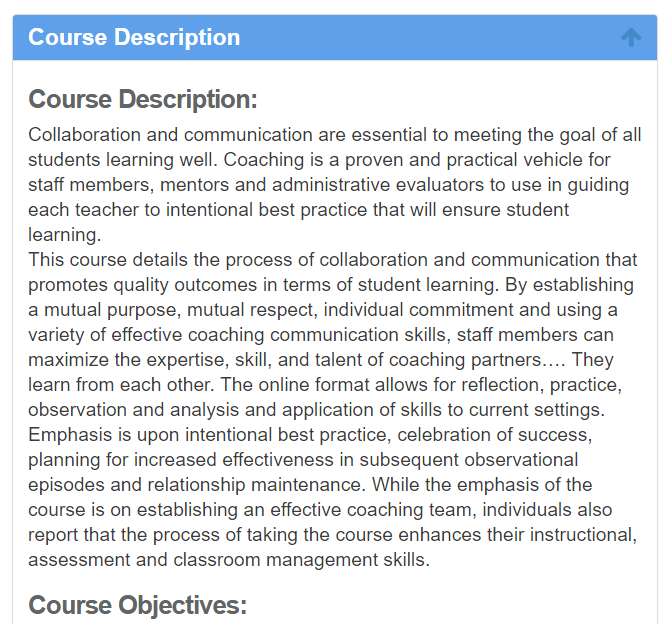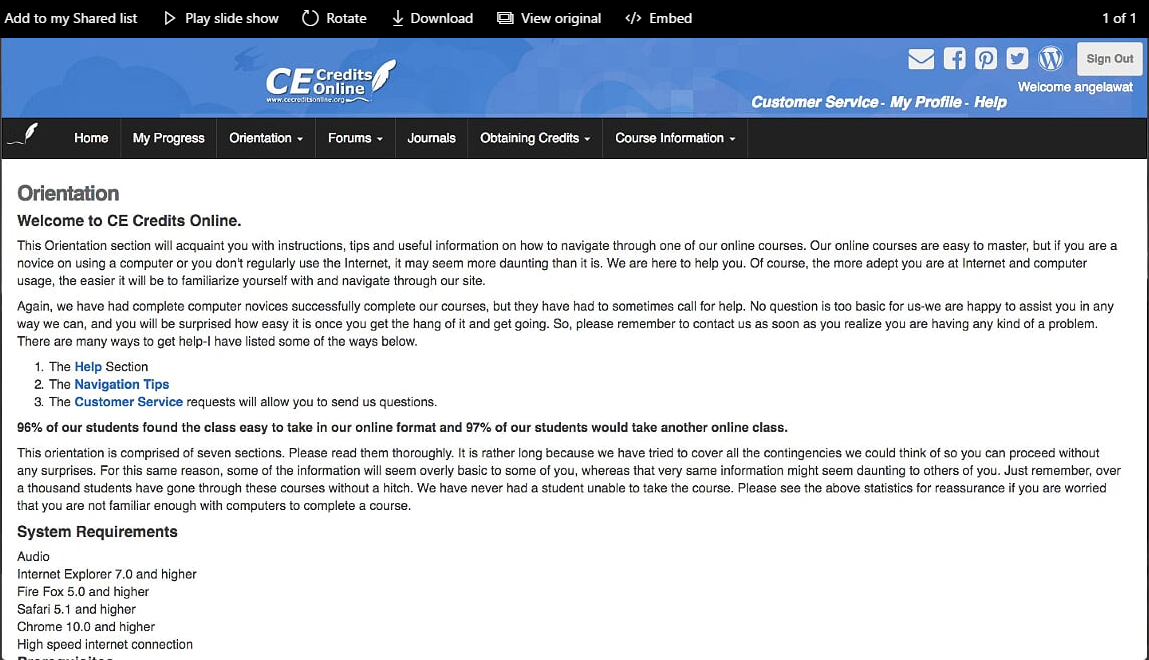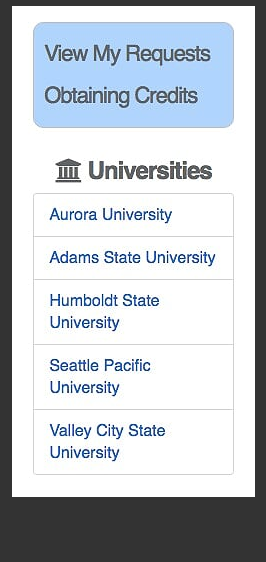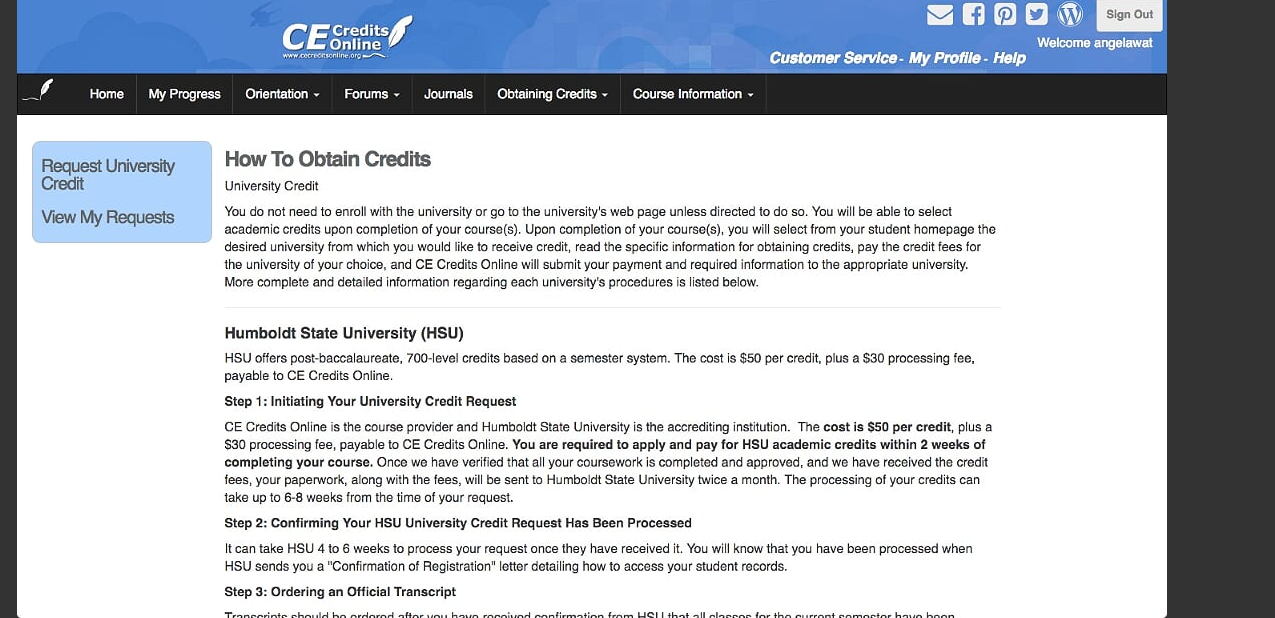There are lots of online options for teachers to get continuing education credits–but how do you know if a site is a legitimate?
When CE Credits Online reached out for help in promoting their courses, I thought this would be the perfect opportunity to take a thorough look at the availability and types of courses, user experience, and quality of the course and professor interactions.
Below you’ll find a detailed overview of my experience with CE Credits Online. Though the post is sponsored through Syndicate Ads, the following is my honest opinion, and I only post reviews of services I would actually use and recommend to other educators.  Public-school teachers across the country are often required to take continuing-education courses. Finding relevant, useful courses has long been a challenge. As recently as ten years ago, teachers were restricted by geography (you had to sign up for courses based on convenience rather than relevance), necessity (sometimes the professional-development sessions you had to sign up for during inservice days didn’t match your needs or even your content area or grade level), and cost.
Public-school teachers across the country are often required to take continuing-education courses. Finding relevant, useful courses has long been a challenge. As recently as ten years ago, teachers were restricted by geography (you had to sign up for courses based on convenience rather than relevance), necessity (sometimes the professional-development sessions you had to sign up for during inservice days didn’t match your needs or even your content area or grade level), and cost.
Thanks to the Internet and resourceful providers, it’s never been easier to find courses that are relevant, self-paced, and cost-effective. One such provider is CE Credits Online, which advertises university-accredited, high-quality, standards-based, online professional development courses. All courses are completely online, self-paced, and available for continuing education credit and post-baccalaureate academic credit.
Pricing for continuing education credits
The regular price of most courses is $375 for continuing education credits. If you want to also get college credit for the course, you must also pay the university an additional fee (between $50 and $75 a credit, depending on the institution you choose.) Because budgets for professional development are tight, CE Credits Online offers a different promotion each month. For example, in honor of Bullying Prevention Month in October, they offered three different courses for $299 each, which is a significant saving:  For November, their promotion is an effort to give back to the community: any past or present course participant may email their name and a link to their Donors Choose page to info@cecreditsonline.org. On Giving Tuesday (November 29) they will give the first 20 submissions $25 toward their Donors Choose project.
For November, their promotion is an effort to give back to the community: any past or present course participant may email their name and a link to their Donors Choose page to info@cecreditsonline.org. On Giving Tuesday (November 29) they will give the first 20 submissions $25 toward their Donors Choose project.
Ease of use and course availability
The CE Credits Online site did present a couple technical glitches when attempting to add courses, but I was able to click through after several page refreshes. Once I was enrolled in the course, I didn’t experience any tech issues at all.
I requested assistance using the online “Contacts” link to see check out the company’s responsiveness to questions. Responses were pretty thorough and they did identify and address each issue and provided help in a reasonable amount of time. I feel confident in saying you can contact them to get any questions and concerns answered before you decide if you want to sign up for a course.
I found it quite easy to locate interesting courses on CE Credits Online with the district info I entered. Another teacher working with me to do the research for this post found that the availability for her district was slightly harder to get to and there were fewer options. When I asked CE Credits Online about this, they explained that not all of the courses are carried in every state’s catalog (depending on what’s relevant to the state’s goals and mandates.) Also, sometimes specific districts will not participate with certain courses if they offer the PD in-house.
So, the variety of courses you see will depend on where you teach, which is actually a plus because it prevents you from seeing tons of courses that your district or state won’t accept.
Here’s how it works: from the homepage, you enter your state and district from two drop-down boxes and click “Go:”  On the next screen, a library of courses will appear on the left side. Click on any category to drill down to the courses offered within that selection:
On the next screen, a library of courses will appear on the left side. Click on any category to drill down to the courses offered within that selection:  You’ll then see a list of courses. After selecting one, you can read the description, see the syllabus, find out the cost, and decide if you want to register. This is a description for “Coaching to Improve Teaching and Learning:”
You’ll then see a list of courses. After selecting one, you can read the description, see the syllabus, find out the cost, and decide if you want to register. This is a description for “Coaching to Improve Teaching and Learning:” 
Experience inside the course and quality of instruction
Of course, taking a class online comes with a separate set of challenges, as you have to figure out how to use the site itself. CE Credits Online provides registered students with much more specific, tailored information and directions for navigating the site once you’re enrolled:  I spent a good deal of time clicking around the course to see the quality of the instruction itself. Because the course content is proprietary, I can’t show you screenshots of that info, but overall, I was satisfied with what I saw. It was easy to figure out what to read, watch, and write. The course content was solid and not difficult to understand. I think just about any teacher–even one who isn’t tech savvy–would be able to make sense of the course and complete it without much trouble.
I spent a good deal of time clicking around the course to see the quality of the instruction itself. Because the course content is proprietary, I can’t show you screenshots of that info, but overall, I was satisfied with what I saw. It was easy to figure out what to read, watch, and write. The course content was solid and not difficult to understand. I think just about any teacher–even one who isn’t tech savvy–would be able to make sense of the course and complete it without much trouble.
I didn’t notice any errors or typos within the course content itself, nor in the feedback given by the instructor. Part of the assignments involve posting to a forum where the instructor responded with thorough, reflective, accurate feedback for each student. This was my biggest concern prior to enrolling–would the instructor be genuinely knowledgable and helpful?–and I definitely felt that she was.
How to get your credits
This was the most nebulous part of the experience for me. CE Credits Online partners with 7 different universities, so you can choose which one you want to earn credits from. Not every university supports every course.
For example, the course I enrolled in for the purposes of this post would allow me to earn university credits from any one of these 5 institutions. We clarified with CE Credits Online that you don’t need to be a student enrolled at one of these colleges to receive credit for completing the course. Your continuing education credits are awarded upon completion of the course, and you simply reach out to the university and pay their fee if you want to also get college credits.  The exact process required to get your credits from a university is explained in details for each institution. Here’s an example shown for Humboldt State University:
The exact process required to get your credits from a university is explained in details for each institution. Here’s an example shown for Humboldt State University:  While every state and district is different as far as what courses and providers they accept — meaning you’ll definitely need to do some prerequisite research with your district before you begin — CE Credits Online offers a wide range of courses available for almost every content area, grade level, or interest.
While every state and district is different as far as what courses and providers they accept — meaning you’ll definitely need to do some prerequisite research with your district before you begin — CE Credits Online offers a wide range of courses available for almost every content area, grade level, or interest.
Final verdict
CE Credits Online didn’t wow me with with the user experience or course content, but it’s definitely a legitimate way of earning continuing education credits (as well as post baccalaureate credits, if you want to earn them through one of the 7 partner universities.)
The biggest benefits of going through CE Credits Online is the affordable pricing, wide range of courses offered, and the fact that you can complete them at your own pace in the comfort of your own home. It’s a very simple solution for teachers who may have lapsed certifications or want to earn a couple of credits with little fuss and hassle.
Visit CE Credits Online to check the site out for yourself and see what courses are available for your district.

Angela Watson
Founder and Writer
Sign up to get new Truth for Teachers articles in your inbox
Discussion
OR

Join our
community
of educators
If you are a teacher who is interested in contributing to the Truth for Teachers website, please click here for more information.
















I noticed consistent errors on quizzes in virtually every course I have and am taking on ce credits online for salary points. Customer service is on point in responding and rectifying the problem.
Exercise due diligence on the quizzes for errors and remember to complete all requirements within 105 days or expect to pay for an extension.